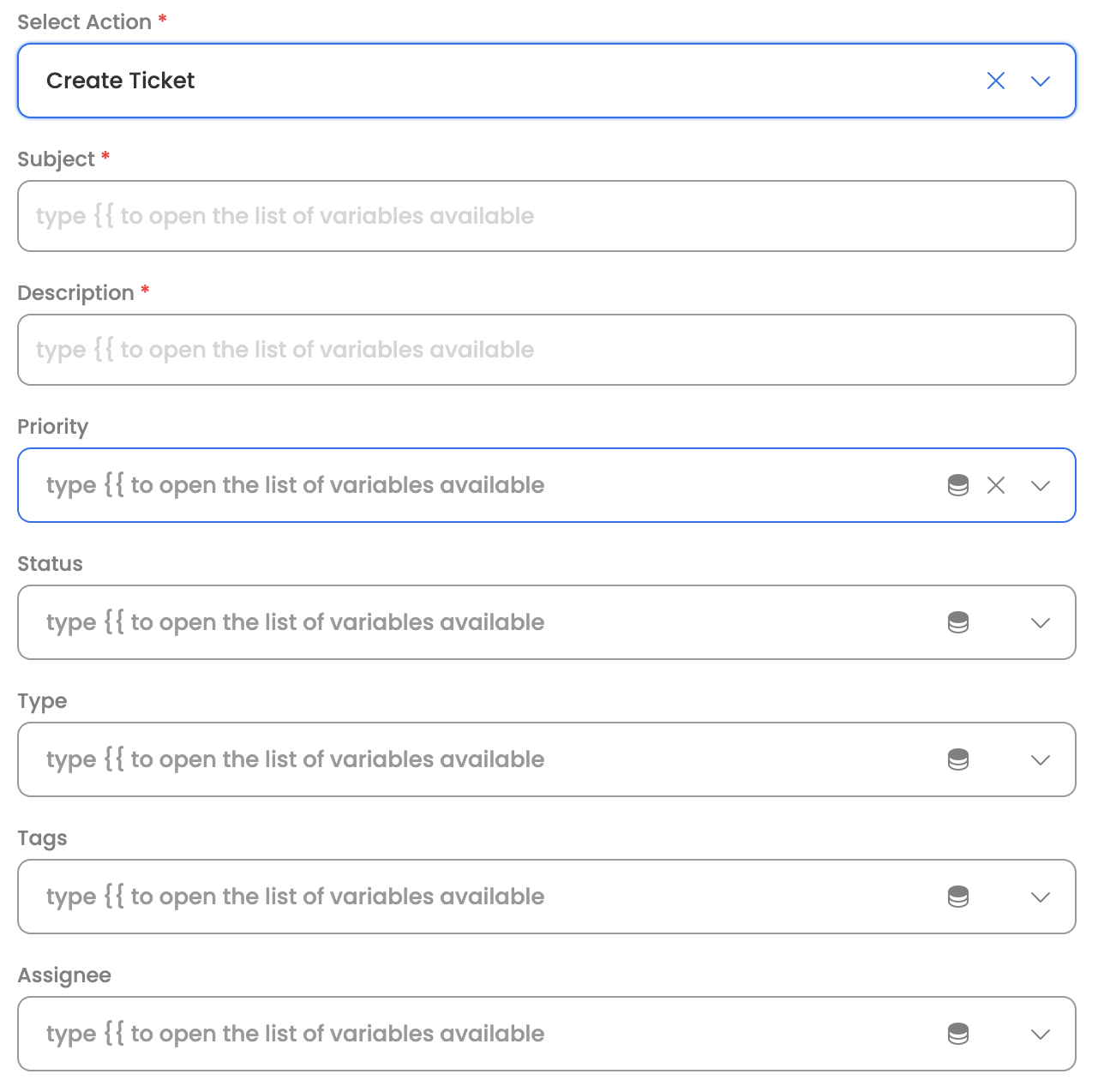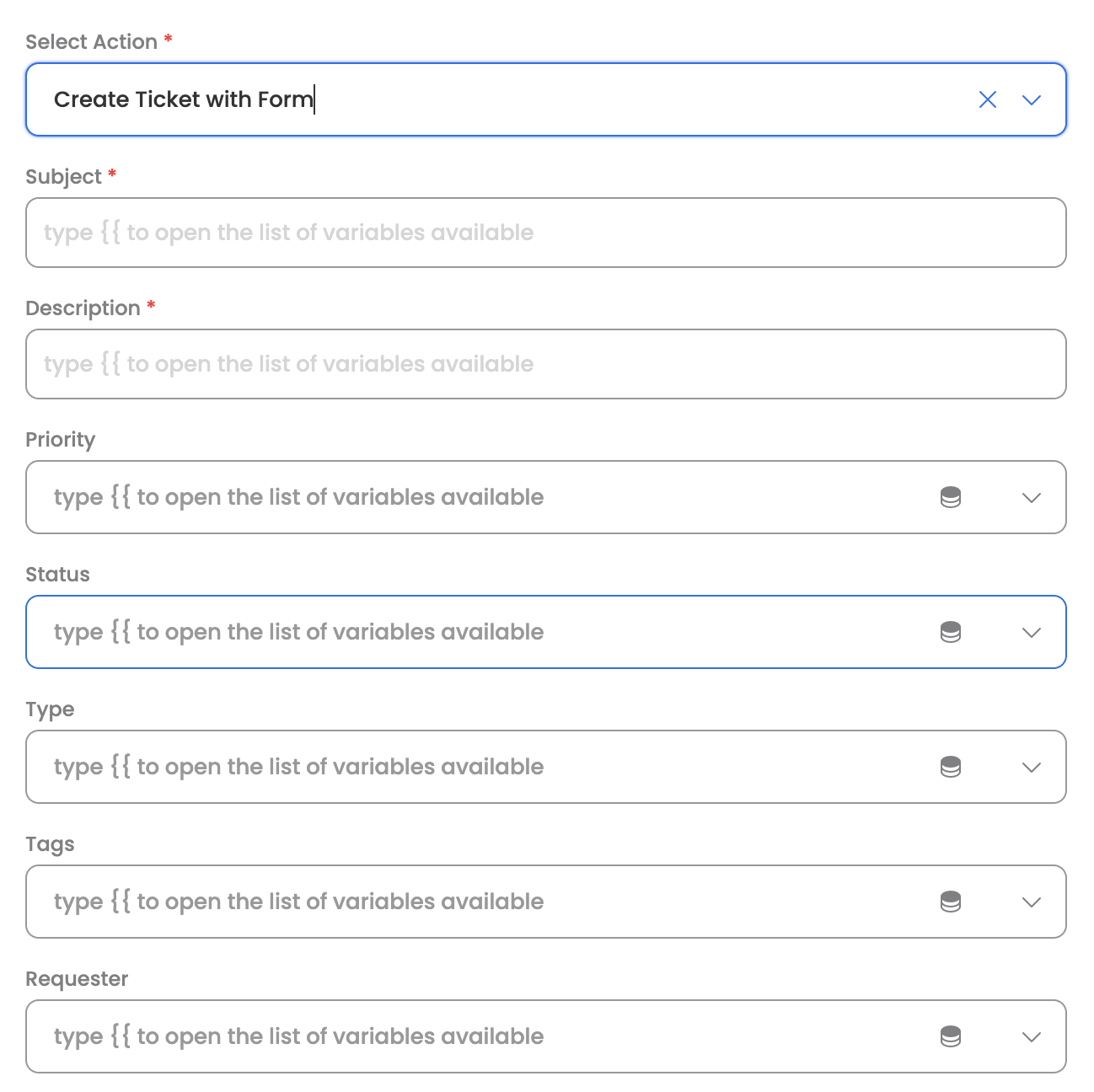Zendesk
Overview
The Zendesk connector enables your Leena AI Agents to integrate seamlessly with your organization's Zendesk support platform, facilitating automated ticket management and user administration. This integration allows for streamlined support workflows, automated ticket handling, and efficient user management.
Zendesk is a cloud-based customer service platform that provides support ticket management, customer communication tools, and analytics capabilities. Through this connector, Leena AI can automate support workflows, manage tickets, and interact with users seamlessly.
Prerequisites
Before setting up the Zendesk connector, ensure you have:
- Administrator access to your Zendesk account
- Access to Zendesk Admin Center
- Ability to create OAuth applications in Zendesk
- Access to your Leena AI workspace with connector management permissions
Setting Up the Connector
Step 1: Create OAuth Client in Zendesk
-
Log in to Zendesk Admin Center as an administrator

-
Navigate to Apps and integrations in the sidebar

-
Click on the OAuth Clients tab
-
Click Add OAuth client
Step 2: Configure Client Details
Fill in the following information:
| Field | Description | Example/Recommendation |
|---|---|---|
| Client Name | Enter a descriptive name for your application | "Leena AI Integration" |
| Client Kind | Choose application type | Confidential (recommended for secure servers) or Public (for mobile apps) |
| Redirect URLs | Callback URL for authentication (to be filled later) | Obtained from Leena AI after creating connector |
Step 3: Save and Note Credentials
-
After saving, Zendesk will generate the Client Secret
-
Copy the Client ID/Identifier (auto-generated based on Name)
-
Important: The Client Secret is displayed only once during creation
-
Save these credentials securely for the next step
-
Keep the Zendesk tab open as you'll need to return to add the Redirect URL

Step 4: Configure Connector in Leena AI
- Log in to your Leena AI workspace
- Navigate to Settings > Integrations
- Search for "Zendesk" and select it from the list
- Click to add a new Zendesk connector
Step 5: Enter Authentication Details
The Zendesk connector uses OAuth 2.0 authentication. Provide the following information:
| Parameter | Description | Source |
|---|---|---|
| Instance URL | Your Zendesk instance URL | Example: yourcompany.zendesk.com |
| Client ID | OAuth application client ID | From Step 3 |
| Client Secret | OAuth application client secret | From Step 3 |
| Grant Type | OAuth grant type | Pre-filled with authorization_code (non-editable) |
| Scope | List of permissions required | Pre-filled but customizable (see Permissions section) |
| ID Mapping Fields | Profile field for unique identification | Pre-filled with email |
Step 6: Complete OAuth Flow
- Click Connect in Leena AI for the Zendesk connector setup
- You'll be redirected to the Zendesk authorization page
- Sign in to your Zendesk account if prompted
- Click Allow to grant permissions
- You'll be redirected back to Leena AI with a successful connection
- The connector will be saved
Step 7: Update Redirect URL in Zendesk
-
Once the connector is saved in Leena AI, reopen the connector configuration
-
Copy the Callback URL displayed in the connector details
-
Return to the Zendesk OAuth client configuration
-
Paste the Callback URL in the Redirect URLs field
-
Save the OAuth client in Zendesk

Permissions and Scopes
The connector requires specific permissions to perform various operations. Scopes are categorized into read and write permissions:
Read Scopes
Allow viewing and retrieving data without modification:
| Scope | Description | Access Level |
|---|---|---|
| tickets:read | View tickets and their properties | Read-only ticket data |
| users:read | View user profiles and information | Read-only user data |
| organizations:read | View organization details | Read-only organization data |
| groups:read | View agent groups | Read-only group data |
Write Scopes
Allow creating and updating data:
| Scope | Description | Access Level |
|---|---|---|
| tickets:write | Create and update tickets | Full ticket management |
| users:write | Create and update user profiles | Full user management |
| organizations:write | Create and update organizations | Full organization management |
Available Actions
Ticket Management
Create Ticket
Initiates a new support ticket in Zendesk. The Agent can leverage workflows designed to create new support tickets when users raise queries.

Required Parameters:
subject(String): The subject of the ticketdescription(String): The detailed description of the issue
Optional Parameters:
priority(String): The priority of the ticket - Options:low,normal,high,urgenttags(Array): A list of tags associated with the ticketassignee_id(Integer): The user ID to assign the ticket totype(Dropdown): The category of ticket - Options:Problem,Incident,Question,Taskcustom_fields(JSON): Client-specific fields (e.g., category, sub-category)
Create Ticket via Custom Ticket Form
Creates a new ticket in Zendesk using a specified custom ticket form, allowing for a tailored set of fields.

Required Parameters:
ticket_form_type(Dropdown): The custom ticket form selected from available formssubject(String): The title or subject of the ticketdescription(String): A detailed description of the issue or request
Optional Parameters:
priority(String): The priority level - Options:low,normal,high,urgentcustom_fields(Array): Array of objects representing custom field valuesrequester(Object): Information about the requester
Custom Fields Structure (JSON):
{
"field_id": "Integer - The ID of the custom field",
"value": "String or Array - The value(s) to be set for the custom field"
}Get All Tickets
Retrieves a list of all tickets in your Zendesk account. This action can be leveraged by Leena AI to list tickets raised by a user or assigned to a particular assignee.

Required Parameters: None
Optional Parameters:
page(Integer): Page number for pagination - Default: 1per_page(Integer): Number of tickets to retrieve per page - Default: 25, Max: 100status(String): Filter tickets by status - Options:open,solvedassignee_id(Integer): Filter tickets by the assignee's user ID
Get a Ticket
Retrieves detailed information about a specific ticket by its ticket ID. Users can request the status of their last ticket or ask for status by ticket ID.

Required Parameters:
ticket_id(Integer): The ID of the ticket to retrieve
Update a Ticket
Updates an existing ticket's details such as status, assignee, or priority. This action can be leveraged to close tickets on behalf of requesters or assignees.

Required Parameters:
ticket_id(Integer): The ID of the ticket to be updated
Optional Parameters:
subject(String): The subject of the ticketdescription(String): The description of the ticketstatus(String): The new status - Options:open,pending,solvedpriority(String): The new priority - Options:low,normal,high,urgentassignee(Integer): The user ID to assign the ticket to
Delete a Ticket
Deletes a specific ticket from Zendesk. This action is typically used in micro-services or scheduled tasks to delete test tickets.

Required Parameters:
ticket_id(Dropdown): The ID of the ticket to delete (can be selected from dropdown or passed dynamically)
User Management
Create a User
Creates a new user in the Zendesk instance. This action can be leveraged in onboarding workflows to automate the process of adding new users.

Required Parameters:
name(String): The name of the useremail(String): The email address of the user
Optional Parameters:
role(String): The role of the user - Options:admin,agent,end-user(default)organization_id(Integer): The ID of the organization the user belongs totags(Array): An array of tags to associate with the user
Get All Users
Retrieves a list of all users in your Zendesk account. This action can be used in workflows such as changing ticket assignees.

Required Parameters: None
Optional Parameters:
page(Integer): The page number for pagination - Default: 1per_page(Integer): The number of users to return per page - Default: 25, Max: 100role(Dropdown): Filter users by their role - Options:admin,agent,end-user
Get a User
Retrieves details of a specific user by their User ID. This action can be leveraged to get and update user information.

Required Parameters:
user_id(Dropdown): The ID of the user to retrieve (can be selected from list or passed dynamically)
Use Cases
Automated Ticket Creation
Enable employees to create support tickets through conversational AI, with the assistant gathering necessary information and automatically creating tickets in Zendesk.
Ticket Status Inquiry
Allow users to check the status of their tickets by simply asking the virtual assistant, which retrieves real-time information from Zendesk.
Ticket Management
Empower agents and users to update, close, or reassign tickets through AI-powered workflows without accessing the Zendesk interface directly.
User Onboarding
Automate the creation of new Zendesk users as part of employee onboarding processes, ensuring immediate access to support systems.
Support Analytics
Retrieve ticket lists and user information to generate insights and reports about support operations.
Troubleshooting
Authentication Issues
Problem: Unable to complete OAuth authentication
Solutions:
- Verify that the Client ID and Client Secret are entered correctly
- Ensure the Redirect URL has been added to the Zendesk OAuth client configuration
- Check that your Zendesk account has admin privileges
- Verify that the Instance URL is correct (format:
yourcompany.zendesk.com)
Permission Errors
Problem: Actions fail due to insufficient permissions
Solutions:
- Review the scopes configured in the connector
- Ensure both read and write scopes are enabled as needed
- Verify that the authenticating user has appropriate permissions in Zendesk
Callback URL Mismatch
Problem: OAuth flow fails after authorization
Solutions:
- Ensure the Callback URL from Leena AI is exactly copied to Zendesk
- Check for trailing slashes or extra spaces in the URL
- Verify the OAuth client in Zendesk is saved after adding the Redirect URL
Best Practices
- Security: Store Client ID and Client Secret securely and never share them publicly
- Permissions: Only grant the minimum required scopes for your use case
- Testing: Test the connector with non-production data before deploying to production
- Monitoring: Regularly review connector usage and permissions
- Documentation: Keep track of custom fields and their IDs for easier workflow configuration
Support
For additional assistance with the Zendesk connector:
- Contact your Leena AI support team
- Refer to Zendesk API documentation for platform-specific questions
- Check connector logs in Leena AI for debugging information
API Rate Limits
Be aware of Zendesk's API rate limits when configuring automated workflows. Plan your automation frequency accordingly to avoid hitting rate limits.
Updated about 19 hours ago
